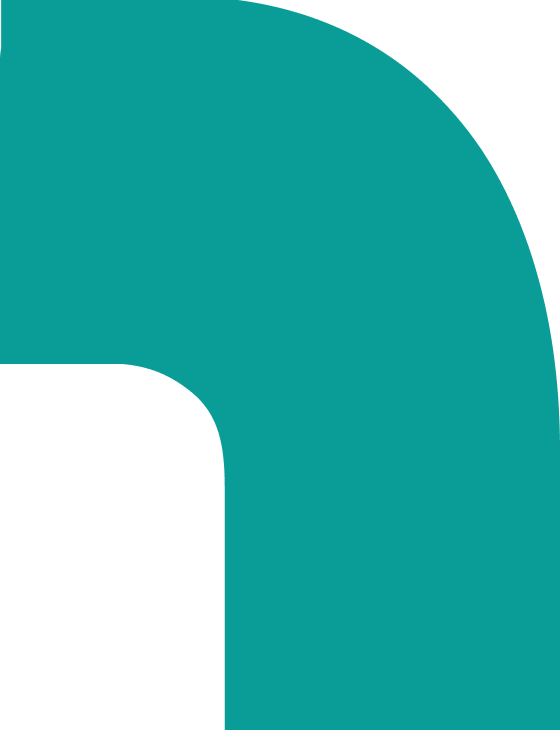You’ve spent weeks, maybe months, working out detailed plans on how you’re going to make building your app or your website work. But reality isn’t very cooperative. Perhaps your schedule starts to drift. Maybe revenue doesn’t hit the level you predicted. Does your plan need to change or do you simply need to take a different approach?
This article explores strategies for optimising resource allocation and management and navigating trade-offs between time, cost, and quality.
This is a broad topic, a huge topic, so for this article we will focus on five key resources:
- Financial Resources
- Human Capital
- Technological Assets
- Operational Capabilities
- Market Position
Conferensity: Our example for resource management
To illustrate resource management we’re going to use the same imaginary company we use in all the articles in this series – Conferensity. They’re a B2B event management platform with aspirations to become a comprehensive conference solution.
Their strategy involves expanding their web-based software’s capabilities and developing two apps – one for conference admins and another for attendees. While these are three digital products, 1 website and 2 apps, there is actually a fourth project – the updated backend that will implement the features the website and apps will provide interfaces for. This backend will also require extensive work to provide all the necessary admin features to manage the new frontend features.
By dedicating their resources to these four digital projects Conferensity is actively working towards achieving their primary business objective. Here is some of what they want their products to do:
manage venue communication and arrangements (such as contracts, venue layout, and extra services like conference Wi-Fi, local tours, etc)
handle communication with speakers, panel members, and guests (including contracts, accommodation, presentation reservations, and travel), and
provide opportunities to make purchases through the app for everything from refreshments to accommodation and perhaps one day flights.
Their first app will be for conference admins, duplicating the client-accessible website’s functionality. The second app, designed for attendees, will allow attendees to reserve seats, purchase tickets to the conference, and pay for any related services, purchase refreshments and merchandise. It will also have features like schedules and venue maps, presentation start reminders, live questions via chat rooms, presentation feedback, and special features for speakers.
Their strategy encompasses a website overhaul and the launch of two apps supported by a robust back-end system. The success of these digital projects is critical to achieving their goal of increased market share and revenue.
Optimising Resource Allocation and Management
Broadly, resource management needs a strategic approach to ensure that every investment contributes to your overarching business goals. These are the basic strategies you should apply across every aspect of your product development:
- Strategic Resource Planning: You should already have a comprehensive resource plan that supports your project timelines and business objectives. Keep revisiting it.
- Prioritisation of Tasks: Identify critical project components that require more attention and allocate resources accordingly. Keep an eye out for slippages in your schedule. This might mean your initial plan wasn’t quite accurate. Be prepared to re-assess and re-allocate.
- Efficiency Enhancements: Implement tools and processes that increase the efficiency of your resource utilisation. Some of this will be learn-as-you-go. Take a time-out occasionally to look at your processes and see where you can streamline.
Now let’s look at specific recommendations for each of the 5 main resources we’re concerned with.
Financial Resources
When it comes to managing your project’s financial resources, the first step is to create a detailed budget plan. This means breaking down the costs for each phase of the project and allocating funds accordingly. It’s important to be as comprehensive as possible, accounting for everything from software licences to employee salaries. Using tools like Xero or QuickBooks can make this process a lot easier, helping you track expenses and stay within budget. But creating a budget is just the beginning.
To really stay on top of your project’s finances, you need to schedule regular financial reviews. These assessments give you a chance to take a closer look at where you’re overspending or underspending, and make adjustments as needed. It’s a bit like checking your project’s financial vital signs – if something looks off, you can take action before it becomes a bigger problem.
Even with the most careful planning, unexpected expenses can still pop up. That’s why it’s smart to set aside a portion of your budget as a contingency fund. This is basically a financial safety net that ensures minor setbacks don’t completely derail your project.
How big is the contingency fund? That depends on your risk factors. If you have a lot of confidence in your success, then 5% – 10% is a good rule of thumb. If you are building a new product and your team’s experience is limited in this area, then 10% – 20% is the norm, but you might want to go even higher.
Conferensity chose to allocate a significant portion of their financial resources to the development of their backend system, as it was the foundation for their website and apps. They also set aside a contingency fund to cover any unexpected costs that might arise during the development process.
Human Capital
When it comes to managing your project’s human capital, the first step is to take a good, hard look at your team’s skills. You need to figure out where the gaps are and decide whether it makes sense to train your existing staff or bring in some fresh talent. It all depends on your timeline and how quickly you need to get things up and running.
Hiring a bunch of new people can cause major delays, delays that may not make sense if you only need their skills for a short time. That’s where flexible staffing comes in. Consider extending your team via staff augmentation with some near-shore software developers. They can help fill in those skill gaps and handle any temporary spikes in workload without the long-term commitment.
But here’s the thing: no matter how you structure your team, you need to keep them motivated and engaged. It’s not just about getting the work done; it’s about making sure your team is happy and invested in the project’s success. Regular feedback sessions, recognition programs, and opportunities for growth can go a long way in retaining your top talent. Losing the wrong people is a risk you need to manage because it can cause huge setbacks.
In Conferensity’s case, they decided to invest in short course targeted training for their existing development team to make sure they had the skills to build the critical backend system. But they also brought on board an extended team to help with the frontend development of the website and apps. By using a mix of training and flexible staffing, they were able to get the right people in place to make their project a success.
Technological Assets
No-one invests in bare metal infrastructure out of the gate any more. Cloud-based services like Amazon Web Services (AWS) or Microsoft Azure can host your applications and store your data, offering scalability and cost-effectiveness as you find your market. As your business grows, you can easily scale resources without investing in expensive hardware. With the cloud, you pay only for the resources you use, reducing overall IT costs until you reach unicorn scale.
Cloud providers also offer security and reliability, including protections against cyber threats like DDOS, and ensuring data accessibility through robust backup and disaster recovery solutions.
But the cloud is just part of your solution. To streamline your development process, you should look into agile development tools. Jira or Trello, for example, are project management tools that can help you keep your team on track and ensure everyone is working towards the same goals.
When it comes to version control, tools like GitHub or GitLab are important. They allow you to track changes to your codebase and collaborate with your team. Continuous integration and deployment (CI/CD) is also worth considering. By automating your build, test, and deployment processes using tools like Jenkins or CircleCI, you can improve your development process. This streamlines your workflow and reduces the risk of manual errors that can slow you down.
Conferensity opted to host their backend system on AWS, taking advantage of its scalability and reliability. They also implemented Jira for project management and GitHub for version control, enabling their development team to work efficiently and collaboratively.
Operational Capabilities
Process automation is a strategy for enhancing operational capabilities and improving efficiency in web and app development. By identifying repetitive tasks and automating them using tools like Jenkins, Ansible, or Puppet,businesses can save time and reduce the risk of errors. This allows development teams to focus on other aspects of the project, contributing to faster delivery and quality products.
Data-driven decision making is another aspect of effective resource management. By leveraging data analytics tools such as Google Analytics or Mixpanel, businesses can gain insights into user behaviour and preferences. This information can then be used to make decisions about product development, prioritising features and improvements that align with user needs and expectations.
By basing decisions on data rather than assumptions, businesses can optimise their resource allocation and ensure that their products meet market demands.
Finally, implementing a quality assurance and testing process is important for ensuring product excellence. This includes testing and bug fixing throughout the development lifecycle. Automation tools like Selenium or Appium can streamline the testing process, reducing the time and effort required while improving the accuracy and consistency of results. By catching and addressing issues early on, businesses can avoid rework and delays, delivering quality products to their users.
Conferensity implemented a data-driven approach to decision making, using analytics tools to track user behaviour and gather feedback. This allowed them to prioritise features and improvements based on actual user needs.
Market Position
Conducting competitive analysis helps identify opportunities to differentiate your offerings in the market. Tools like SEMrush and Ahrefs provide insights into your competitors’ online presence and marketing strategies, enabling you to make decisions about your own positioning.
Establishing a customer feedback loop helps ensure that your product development aligns with user needs and expectations. By gathering feedback through surveys, interviews, and social media monitoring, you can understand your customers’ preferences and pain points, allowing you to prioritise features and improvements.
Exploring partnerships with businesses or influencers can help expand your reach and strengthen your market position. By collaborating with companies that offer products or services that complement your own, you can tap into new customer segments and enhance the value proposition of your platform.
Conferensity actively monitored their competitors’ offerings and sought out feedback from their users to ensure they were meeting market demands. They also formed strategic partnerships with event venues and vendors to enhance their platform’s value proposition.
Putting it all together
In this article we’ve explored various strategies for optimising resource allocation and management in live projects. By focusing on five key areas – financial resources, human capital, technological assets, operational capabilities, and market position – you can effectively navigate the challenges of web and app development.
Through the example of Conferensity, we’ve seen how these strategies can be applied in practice. By creating a detailed budget plan, investing in team training and flexible staffing, leveraging cloud-based services and agile development tools, implementing process automation and data-driven decision making, and conducting competitive analysis and establishing customer feedback loops, Conferensity was able to successfully develop their backend system, website, and apps while strengthening their market position.
Ultimately, effective resource management requires a strategic and holistic approach that aligns with your business objectives and adapts to changing circumstances. By implementing the strategies and practices discussed in this article, you can optimise your resource allocation, improve efficiency, and deliver experiences that meet the needs of your users and thus drive revenue.













